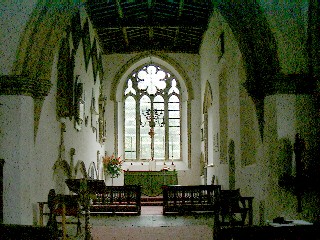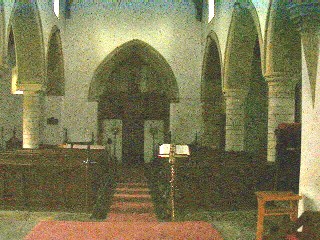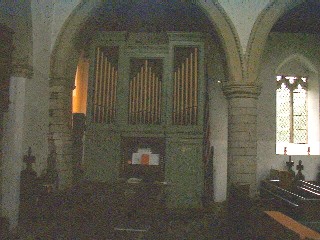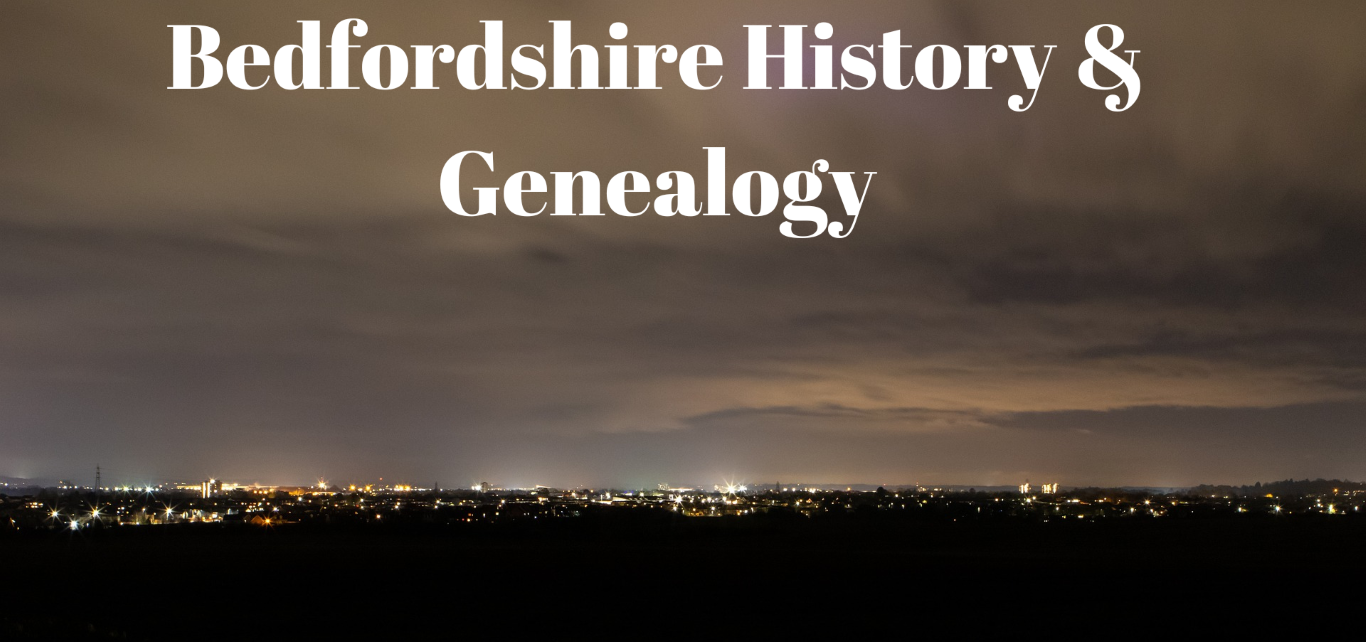PODINGTON
PODINGTON village (or PUDDINGTON) is a parish and small village, 3 miles south from Irchester station on the main line of the Midland railwav about 6 south- east from Wellingborough and 14 north-west from Bedford, in the Northern division of the county, hundred of Willey. Sharnbrook petty sessional division, county court district and union of Wellingborough, rural deanerv of Felmersham, archdeaconry of-Bedford and diocese of Ely. A small brook rises on the confines of the parish, above the village of Hinwick, over which there is a stone (county) bridge of three arches, built by Mr. Orlebar in 1779. Under the provisions of the "Divided Parishes Act, 1882," Yelnoe farm has been transferred from Podington to Odell. By Local Government Board Order 16,417, dated March 24, 1884, Farndish was annexed to this parish for civil purposes.
The church of the Virgin Mary is a handsome edifice of stone, in the Transitional, Early English and later styles, consisting of chancel, clerestoried nave, aisles, south porch and a western tower of Early English date, with crocketed Perpendicular spire, containing a clock and 4 bells: the chancel retains an Early English piscina, and in the north wall are four sepulchral arches, two semi-circular and the others pointed, but now blocked with memorials to the families of Payne and Child: the carving of the porch door, Perpendicular, is unusually rich: in the church is a monument to General Livesay, 1717, a descendant of Sir Michael Livesay, the regicide, and there are many memorials to the Orlebar family from 1658; of the Childs from 1647, and the family of Payne from 1624: in the nave is a brass effigy with inscription to John Howard, 1518, and in the church and churchyard are inscribed stones to the Rev. William Bamford, vicar, 1734, and the Rev. Oliver St. John Cooper M.A. vicar, 1801 : the porch has been rebuilt and the south aisle re-roofed at a cost of about £220: in 1883 the church was again restored, at a cost of £330: the font is Norman, and its exterior surface exhibits three designs representing the Trinity: the church plate includes a chalice, presented by Elizabeth Livesay in 1707; and there is a black letter Bible, dated 1613: the church affords 333 sittings. The register dates from the year 1662.
The soil is loam; subsoil, clay and limestone and rock in places. The chief crops are wheat and pasture. The area is 3,513 acres ; rateable value, £3,293 ; the population in 1891 was 504 in the civil and 424 in the ecclesiastical parish. HINWICK is a hamlet, 1 mile south.
[Extracts from Kelly's Directory - Bedfordshire - 1898]



Photographs Copyright © Martin Edwards 2001


